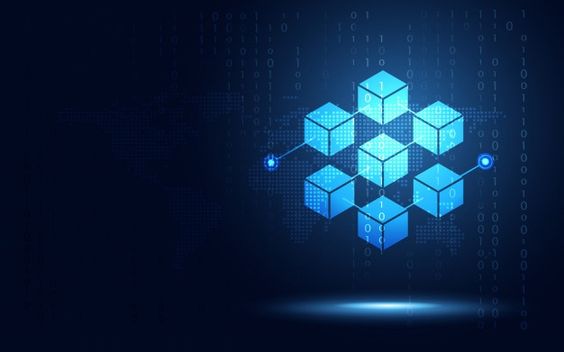Welcome to the age of Blockchain, a revolutionary technology that has taken the world by storm. If you’re new to this concept, don’t worry – you’re not alone! In this beginner’s guide, we’ll explore what Blockchain is and how it works. We’ll also dive into its benefits and disadvantages, as well as some real-world applications. So fasten your seatbelts and get ready for an exciting journey through the fascinating world of Blockchain!
What is Blockchain?
At its core, Blockchain is a decentralized ledger that records all transactions made on it. It’s essentially a database that keeps track of various pieces of information and ensures their accuracy through consensus mechanisms.
Unlike traditional databases, which are typically owned by a single entity or organization, Blockchain is distributed among many parties who work together to maintain the integrity of the system. This means no one party has complete control over the data stored on it.
Each transaction added to the blockchain is verified by nodes (computers) on the network and then added as a new block in chronological order. Once added to the chain, this information cannot be altered or deleted without consensus from other participants – making it an incredibly secure way to store sensitive data.
So why all the hype around this technology? Well, because Blockchain eliminates intermediaries and increases transparency. By removing centralized authorities like banks and government institutions from certain processes, transactions can happen quicker, cheaper, and more securely than ever before.
How Does Blockchain Work?
Blockchain is a distributed ledger technology that operates in a decentralized manner, meaning there is no central authority controlling the data. Instead, it relies on a network of computers to validate and record transactions.
To understand how blockchain works, imagine that you have a notebook where you write down all your financial transactions. However, instead of keeping this notebook only for yourself, you share it with others who also keep their own notebooks with similar information.
Whenever someone wants to make a transaction or add new information to the notebook, everyone in the network must verify and approve it before adding it permanently to their own copy of the notebook. Once approved and added, this new block of data becomes part of an unchangeable chain that links every previous block together.
The security of each block comes from complex mathematical algorithms that ensure its authenticity and uniqueness within the chain. This means any attempt at tampering with one block would require simultaneously altering every other block in the chain as well – making blockchain incredibly secure.
In summary, blockchain’s unique way of decentralizing trust allows for increased transparency and security when transferring valuable assets like money or property without relying on intermediaries such as banks or lawyers.
Benefits of Blockchain
Blockchain technology has emerged as a revolutionary tool, responsible for changing the way we store and transfer information. It offers numerous benefits that have made it increasingly popular in recent years. One of the most significant advantages of blockchain is its ability to provide transparency and security while cutting out intermediaries.
With blockchain, there is no need for middlemen such as banks or government agencies to verify transactions. Instead, multiple participants can confirm each transaction making it secure and transparent. This feature also eliminates the potential for fraud or corruption since everyone on the network must approve any changes.
Another benefit of blockchain technology is decentralization which means that no single entity controls all data stored on the chain. With decentralized systems, users have more control over their data without worrying about censorship or manipulation by centralized authorities.
Additionally, Blockchain allows faster processing speeds than traditional financial institutions due to its distributed nature. Transactions are processed almost instantly with minimal fees compared to traditional payment methods like wire transfer.
Blockchain offers a higher level of privacy protection because all transactions are encrypted using complex algorithms that make it difficult for hackers to steal sensitive information from users’ wallets or accounts.
These benefits indicate how valuable this emerging technology can be across various industries ranging from finance to healthcare among others.
Disadvantages of Blockchain
While blockchain technology offers many benefits, it also has its fair share of disadvantages. One major disadvantage is the issue of scalability. As more transactions are added to the chain, the system can become slower and less efficient.
Another downside is that once a transaction is recorded on the blockchain, it cannot be reversed or deleted. This can be problematic in situations where an error was made or fraud occurred.
Additionally, because blockchains rely on a network of nodes to validate transactions, there is always the risk of a 51% attack where one entity gains control over more than half of the nodes and manipulates the system for their own benefit.
Furthermore, due to its decentralized nature and lack of regulation in some cases, blockchain technology has been associated with illegal activities such as money laundering and drug trafficking.
While blockchain may eliminate intermediaries in certain industries like finance or real estate, this could lead to job loss for those who work in these fields.
While blockchain technology presents many exciting opportunities for innovation and disruption across various industries, it’s important to also consider its limitations and potential downsides.
Applications of Blockchain
Blockchain technology has proved to be a game-changer for various industries, and the possibilities are endless. Some of its most significant applications include supply chain management, digital identity verification, voting systems, real estate transactions, healthcare record keeping, and many more.
The transparency and immutability that blockchain brings is changing the way businesses operate across different sectors. It enables secure data sharing without any intermediaries while reducing costs and increasing efficiency.
As we have seen in this beginner’s guide to understanding blockchain technology, it is an innovative solution with limitless potential. With more research and development taking place every day, we can only expect further advancements in this revolutionary technology that will transform our lives even more in the years to come.
















